Author and actor Michael Veitch recounts his experiences writing about the Southern Surveyor, and meeting the scientists, crew and staff from the vessel.
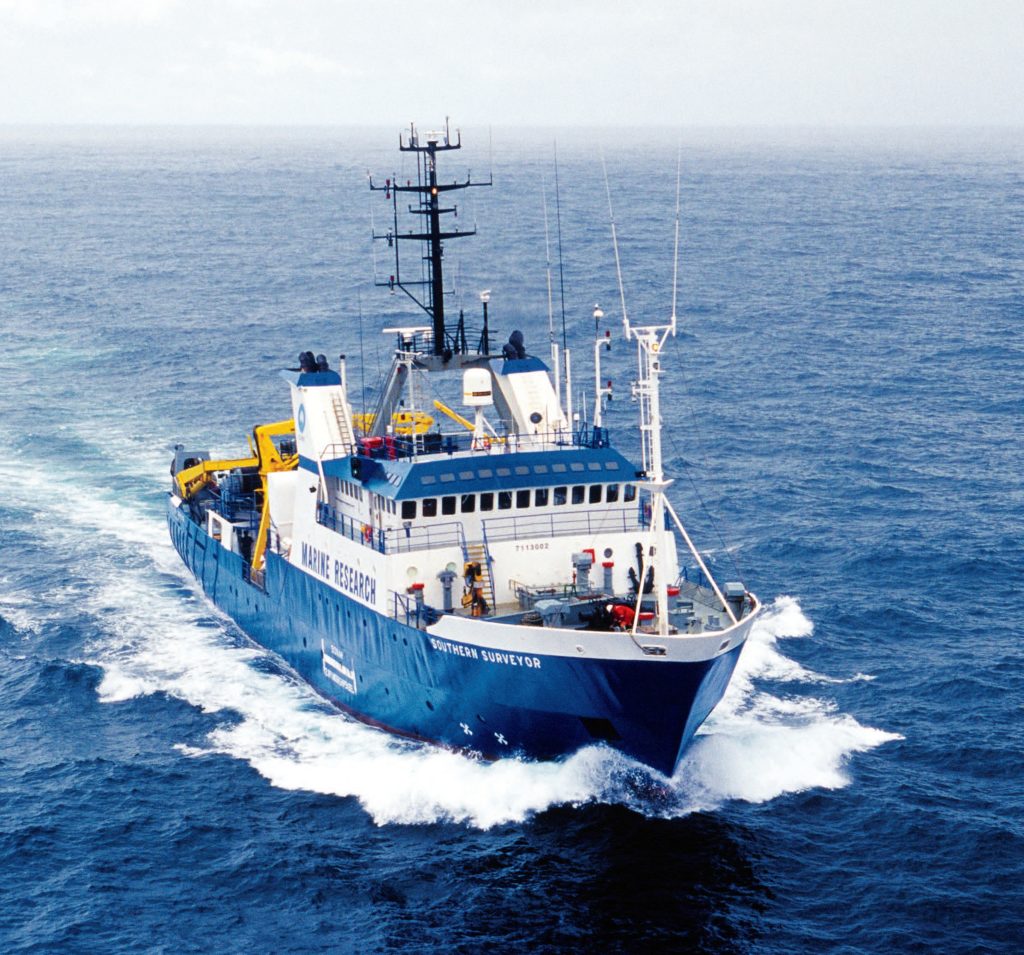
The Southern Surveyor served Australia’s marine scientists for ten years before it was retired in 2013.
To celebrate the launch of the Southern Surveyor: Stories from onboard Australia’s research vessel, we invited Author and actor Michael Veitch to recount his experiences writing about the vessel, and share three of his favourite stories from the book.
It’s a funny thing writing a book: you spend all that time alone in a darkened (if you write at night, like I do) room: just you and your head, nutting out a story, tapping away into the night. Then you give it away and a few months later – it’s ripped from its cosy little womb and exposed into the searing light of day, as well as the public’s gaze.
That’s where I’m at now, with the recent release of a book about the former CSIRO Marine National Facility research vessel Southern Surveyor. Thankfully however, it’s been a pretty easy transition, as quite a few of the wonderful scientists and technicians have gotten back to me to say “hi,” and “thank-you”. Oh, and also to correct a couple of minor errors! Sorry guys!
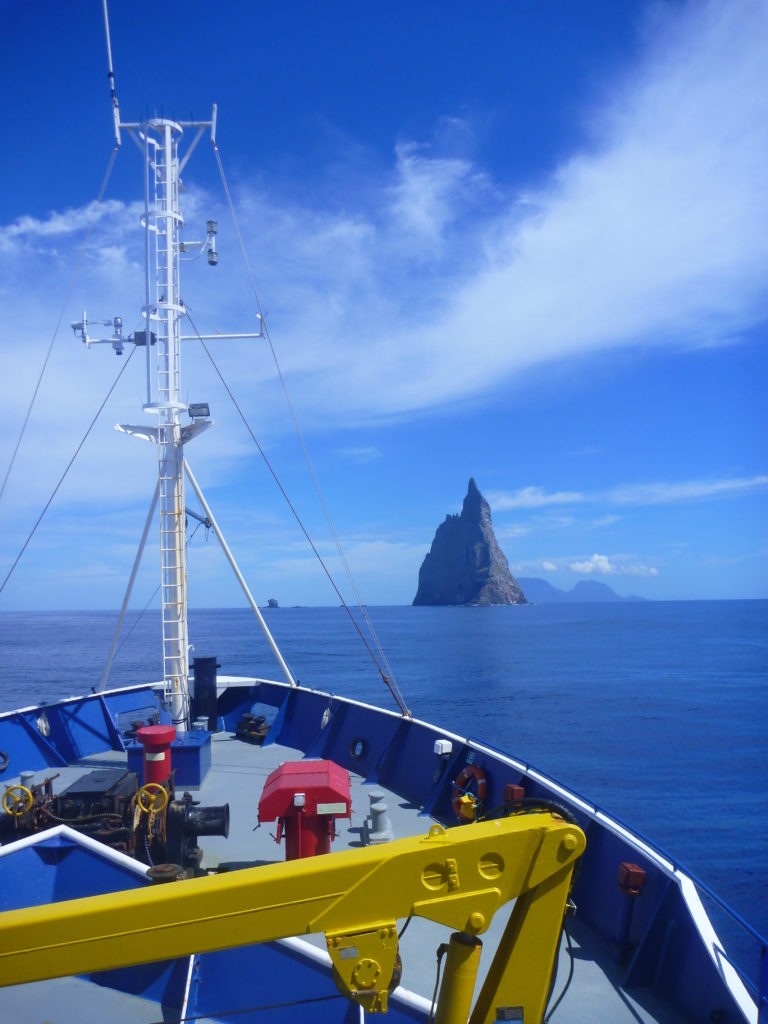
The Southern Surveyor heads towards Balls Pyramid, just one of the many brilliant places the ship visited during its many years of research.
The book is really a tribute to the value of Australian marine science, centred around the wonderful, much-loved vessel in which so much of it took place. Being a complete science hopeless (don’t ask how I did at physics at school) I thought it was going to be a tough ask, but it turned out to be a joy and a privilege meeting so many scientists, crew and support staff from around Australia that have done such wonderful work adding to our knowledge of our oceans, and really, the world.
I have been asked to choose three scientists out of the many I met over the course of writing Southern Surveyor, which I think is a grossly unfair, not to mention well-nigh impossible task. But here goes:
Marine Geologist Tom Hubble’s story is a terrific one: beginning with his detailed study into the science of collapsing river banks along the Murray River, and from there, graduating to the rather more dramatic scale of Australia’s continental margins, way out into the ocean. Tom painted me a vivid picture of what it must be like out there, on those enormous undersea shelves, several kilometres high and thousands long. He’s discovered some amazing things about their structure, as well as the fact that huge pieces of it, well, break off – plummeting down into massive canyons to the ocean floor. In fact the potential for a tsunami along our eastern seaboard should such an event occur close to our shores is very real, but this in no way dampens Tom’s infectious excitement for his subject. The whole thing made me shudder to think about it at times, but not Tom.
I learned from biological oceanographer Martina Doblin about the significance of the mighty flows of water passing down our east coast known as the East Australian Current. Starting near Fraser Island, some of it splits off and heads towards New Zealand, but other parts of it travel on to Tasmania. Martina’s work involves microbes and their interaction with nutrients along the edges and eddies of this great current. Her observations tell her, and ultimately us, about the warming oceans and the real physical evidence of climate change. Martina, although she’d never admit it, is something of a pioneer, and has encouraged and mentored many other young women scientists to embrace the sort of careers that would have been unheard of barely a generation ago. Her story of the beginnings of her time at sea, overcoming horrendous seasickness – at one time thinking of giving up – but persevering and eventually running voyages herself, is quietly inspirational.
I don’t think I can ever forget meeting world-renowned petrologist and volcanologist Professor Richard Arculus, who took me on an extraordinary journey into his fiery underwater world. Richard has explored and discovered some of the most dramatic features on our planet: undersea volcanoes that rise five kilometres from the sea floor, enabling the first ever filming of a subsea eruption, and a brace of no less than eighty submarine volcanos north of New Zealand in a part of the ocean previously believed to be empty. He was also an immensely charming man, generous with his knowledge and still, after many years, maintaining the enthusiasm of a genuine explorer.
Coming from showbiz where everyone boasts endlessly about the usually meaningless and over rated things they do and get paid for, it really was an honour meeting people who actually do things of value. Gosh, if I’d achieved anything like what most of the people on Southern Surveyor had done, I wouldn’t be nearly so modest about it!
If you would like to grab a copy of the book Southern Surveyor: Stories from onboard Australia’s research vessel it is available online and at book shops. Also keep an eye out for me throughout November as I will be doing signings and launches around the country. I can’t wait!
- Southern Surveyor: Stories from onboard Australia’s research vessel is available now
- Dr Stefan Williams preparing the AUV for the first mission at Ribbon Reef 5.
- Balls Pyramid from onboard
- The CTD surfaces after collecting water samples
- Michael Veitch

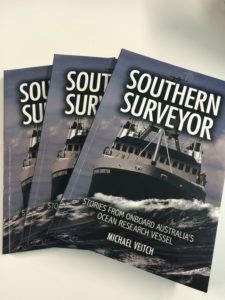
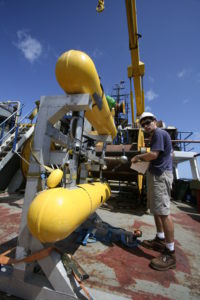
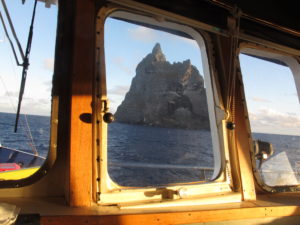
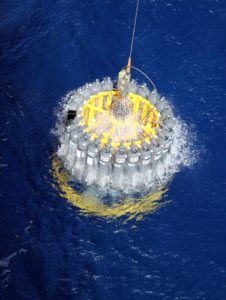
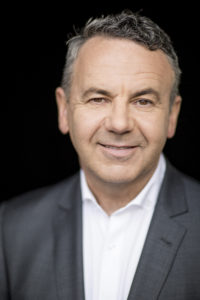

27th October 2015 at 9:39 am
Looking good and a great addition to a number of publications demonstrating CSIR/O’s significant history and contribution to Australian and global science. Rob Birtles – CSIRO former Archivist